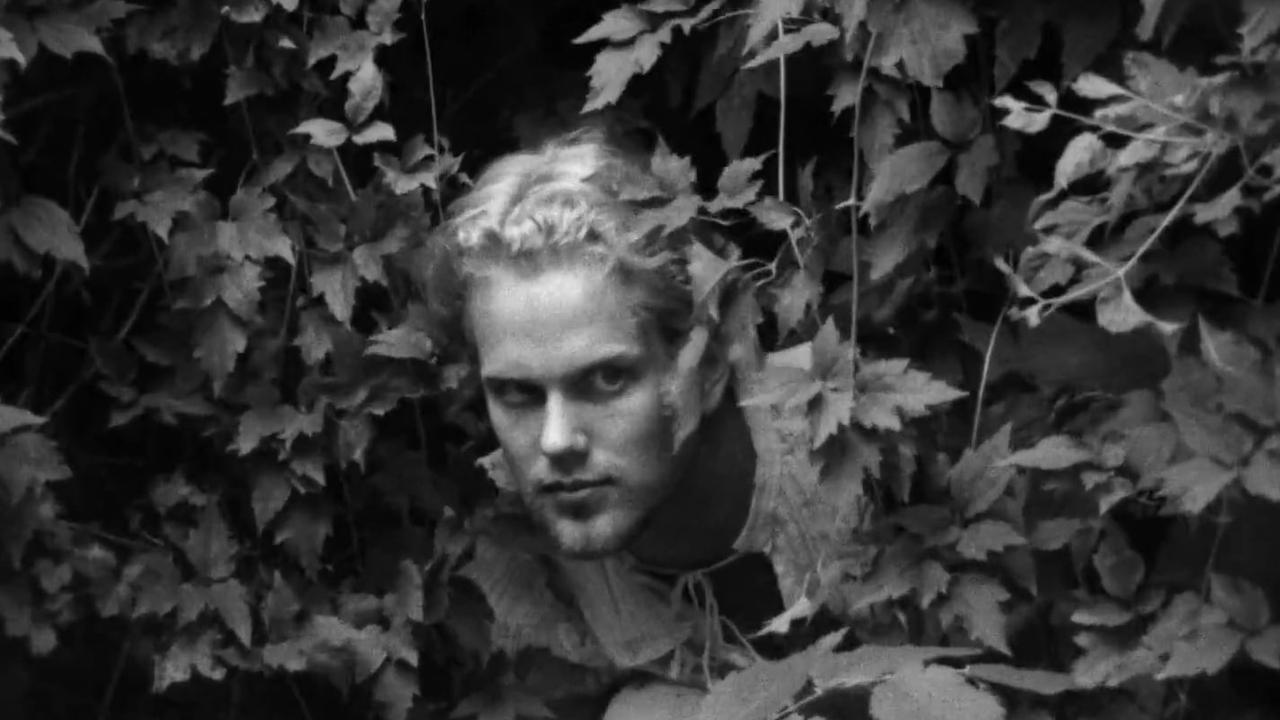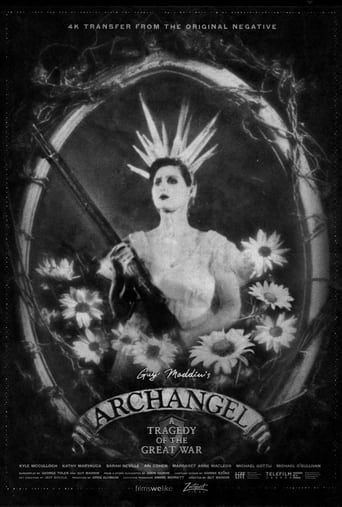

I gave it a 7.5 out of 10
... View Moregood back-story, and good acting
... View MoreGreat movie! If you want to be entertained and have a few good laughs, see this movie. The music is also very good,
... View MoreThere's a more than satisfactory amount of boom-boom in the movie's trim running time.
... View MorePart black comedy, part romantic drama, and part horrific war film-"Archangel" manages to blend these genres with its consistent surrealist style, the style that practically all of Canadian filmmaker Guy Maddin's films are made of. Before I continue this review I'd like to point out that I absolutely ADORE the films of Guy Maddin. I think of him as the Canadian David Lynch (and Lynch is my all time favorite filmmaker, so that's high praise), but comparing him to other icons doesn't truly do his work justice. He certainly has his own, distinct style, his films always mimic the visuals of a silent film, particularly those of Eisenstein. He also experiments a lot with use of overdubbing dialogue, a dreamlike atmosphere, and bizarre, dark humor. His style is not for everybody, but for those that can appreciate this oddball genius his films come across like underrated treasures, and "Archangel" may just be my very favorite.This film is both gruesome and powerful, it makes a statement about dealing with love and loss, while also entertaining us with its wacky plot and laugh out loud humor. I had a ball watching this bizarre, tragicomic tale, mainly due to its fast paced nature and heavy surrealism. Those who seek an other wordly experience will likely adore this film, for I think it best captures Maddin's famously odd style. The acting is at times somewhat wooden, but its obvious that this is the movie's intent. Much of the jokes are performed in a completely deadpan and slightly awkward manner, which makes them even funnier. The dialogue is great, the visuals are beautiful, the story is brilliantly weird, and I cannot find a single problem with this little masterpiece. Those who enjoy the avant garde must see this film as soon as possible!
... View MoreThe sophomore feature from Winnipeg director Guy Maddin confirms the promise of his offbeat 1988 debut 'Tales From the Gimli Hospital', although perhaps with a hint of understandable redundancy. Maddin's peculiar aesthetic is the same, borrowing extensively from the primitive vocabulary of early sound productions (circa 1928-1930), but this time the action is updated from Icelandic fable to the Russian Revolution, a popular setting for Hollywood melodramas during the late silent/early sound era. Every anachronism is flawlessly presented, from the flickering black and white photography to the scratchy music score and crude post-dubbed dialogue, but like 'Gimli Hospital' the macabre (to say the least) plot is pointed straight at today's midnight cult cinephiles. Only the details are different: instead of dead seagull therapy and ritual butt-grabbing duels to the death (both highlights of the earlier film), audiences can enjoy an odd, amnesiac love quadrangle, climaxing when one character uses his own intestines to strangle the Bolshevik barbarian who disemboweled him. Not surprisingly, comparisons have been drawn to the early films of David Lynch, who next to Maddin is more in the same league as Frank Capra.
... View MoreSome movies can be called nightmare movies or like Lynch's Eraserhead, "a dream of dark and troubling things" and while Archangel is a film that falls into the "dream" genre, it is sort of like a whole bunch of mini-dreams that you get during catnaps strung together, and as such, is easily one of the most insane movies I have ever seen. Needless to say, I highly recommend it.
... View MoreDuring the First World War, a Canadian soldier, devastated by the recent death of his fiancee, arrives at the frozen Russian city of Archangel. While billeted with a local family, he is astonished to discover a woman that may or may not be the lover he thought lost. Unfortunately, she is suffering from amnesia and remembers nothing of their former passion. A rival suitor, claiming to be her husband and who may also be suffering from amnesia, is equally unsuccessful at winning her affection. The melancholy story plays itself out against the madness of the Great War.Filming entirely indoors with homemade props and costumes, director Guy Maddin has created a very strange and intense movie. Cribbing heavily from the look and atmosphere of German expressionist cinema, Maddin goes much further in exploring some very human issues: loss, love, memory and redemption. He also examines patriotism and by stylistically depicting the horrors of trench warfare he delivers a pacifist message that reminds me of movies like Grande Illusion and All Quiet on the Western Front. The ultimate power of this movie, however, lies in the sense of alienation we see among the characters. They are not only unable to love each other, they are barely able to communicate. In fact, under the cloud of forgetfulness that is a major theme in this movie, the characters are often not even capable of recognizing one another at all!
... View More